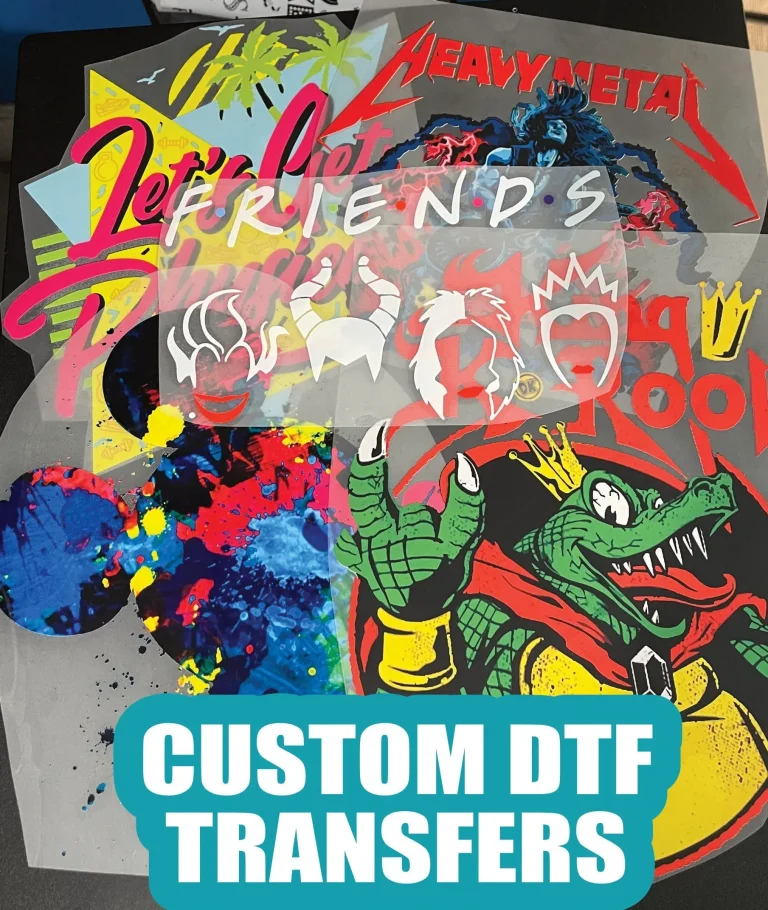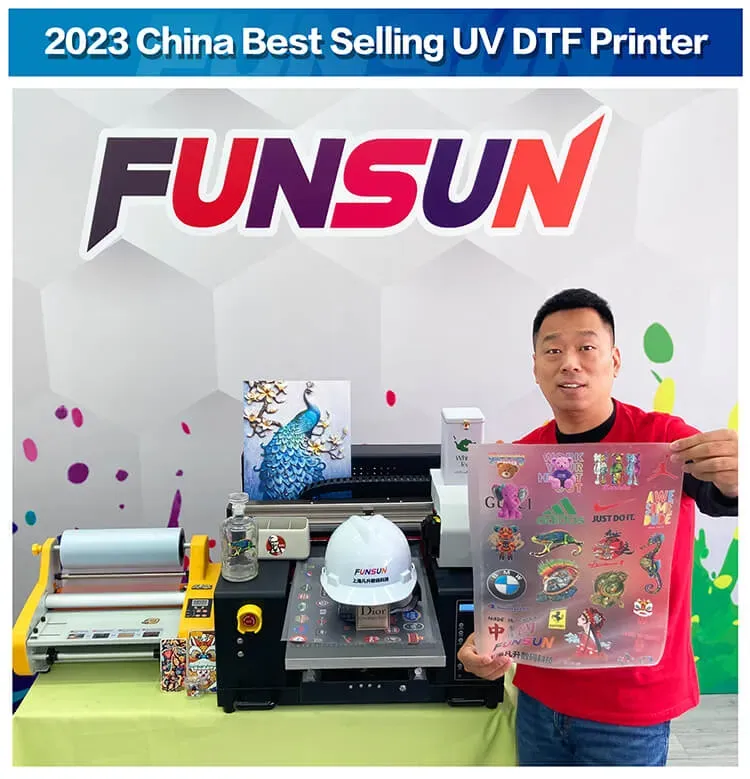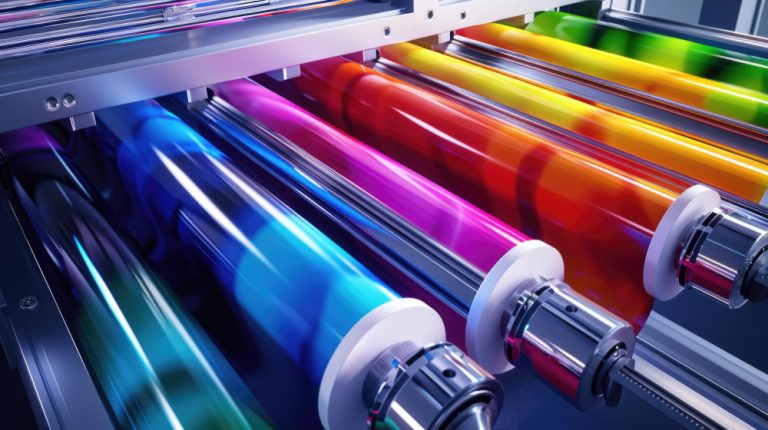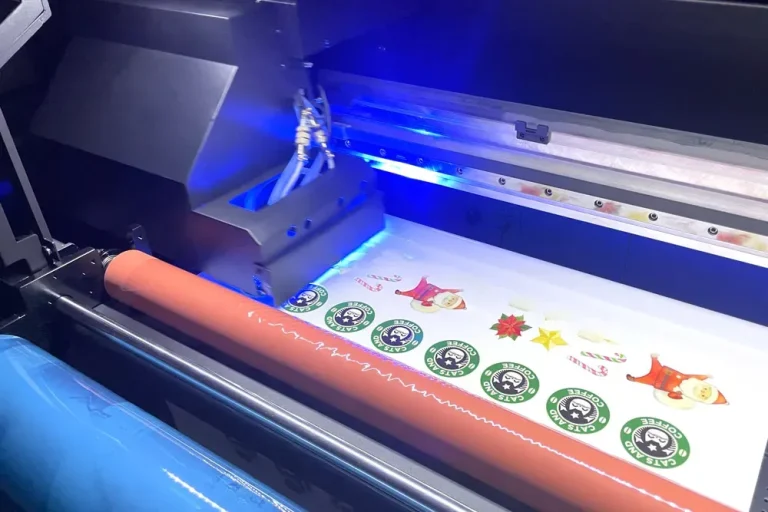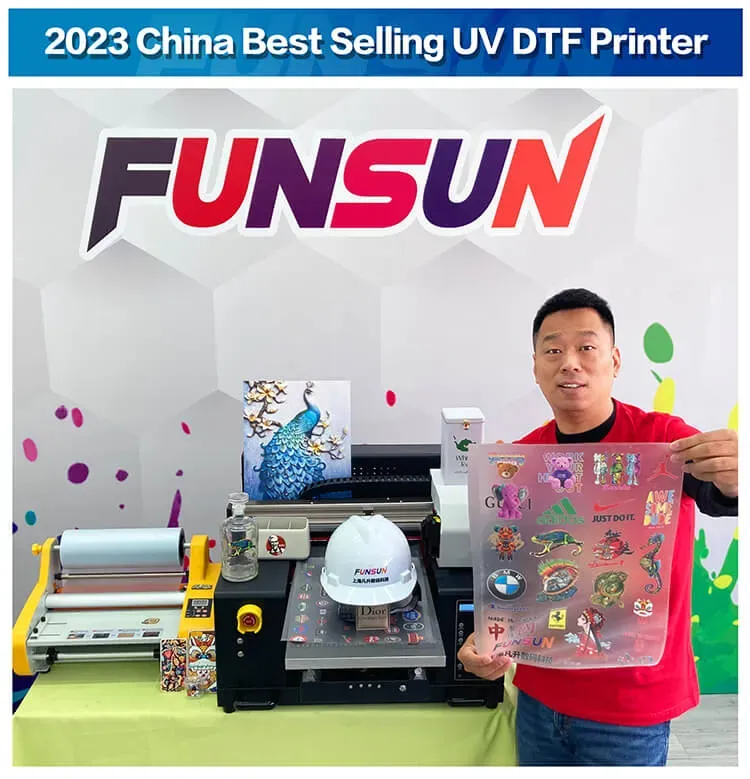
UV DTF printing, or ultraviolet direct to film printing, has taken the printing world by storm, providing both beginners and seasoned professionals with a powerful tool to create vivid, high-quality graphics. This innovative technique utilizes advanced UV printing technologies that cure inks instantly upon application, allowing for intricate details and vibrant colors on various surfaces. In this beginner’s guide to printing, we will delve into the essential steps and equipment needed to harness UV DTF printing’s full potential, paving the way for printing business success. Understanding the marriage of direct to film printing with UV technology will empower you to produce impressive products that captivate customers. Join us as we explore this revolutionary method that’s reshaping the landscape of digital printing.
When we talk about UV Direct to Film printing, we’re referring to a cutting-edge method in the realm of print technology, often associated with vibrant graphics and precise detailing. This approach amalgamates ultraviolet light curing with direct transfer techniques, streamlining the process of creating prints that excel in quality and durability. Whether you’re new to the printing business or looking to enhance your existing operations, mastering the fundamentals of UV printing techniques will be crucial to your success. This guide offers insights not only into the practical aspects of beginning a printing venture but also highlights how leveraging UV printing equipment can set your services apart in a competitive marketplace. As we unpack the ins and outs of this transformative process, you’ll discover the tools and strategies essential for thriving in the printing industry.
Understanding UV DTF Printing Technology
UV DTF printing, or Ultra Violet Direct to Film printing, represents a cutting-edge advancement in the printing industry. This innovative technique stands out for its ability to cure inks instantly using ultraviolet light, allowing for intricate designs to be printed on various materials. Unlike traditional methods, UV DTF provides exceptional durability, vivid color reproduction, and flexibility, making it an ideal choice for both consumers and businesses aiming for high-quality outputs. Furthermore, this process opens new doors in customization, enabling businesses to cater to niche markets effectively.
For beginners delving into UV DTF, it’s essential to grasp the technology behind it fully. At its core, UV DTF utilizes specialized inks designed to adhere to a range of surfaces once cured. This not only minimizes production time but also enhances the printing versatility, allowing for prints on everything from textiles to plastics. In a rapidly digitizing world, understanding the nuances of UV printing is crucial for aspiring entrepreneurs to gain a competitive edge in their respective markets.
Essential Equipment for UV DTF Printing Success
Investing in the right equipment is foundational to your success in UV DTF printing. First and foremost, acquiring a high-quality UV printer specifically designed for DTF applications is paramount. Look for features such as high resolution, quick drying capabilities, and compatibility with a range of materials. Quality is critical; thus, selecting equipment from reputable brands ensures reliability and longevity, which are essential in meeting customer expectations and maintaining business growth.
In addition to the printer, choosing the right inks and accessories is vital. This includes ensuring inline UV inks are designed for DTF applications, as the quality of ink directly impacts the final print results. Other essential components like curing lamps for drying the prints and pre-treatment solutions can significantly enhance the quality and durability of the images. Therefore, investing in top-notch UV printing equipment not only streamlines your production process but also positions your printing business for sustained success.
Choosing the Right Film for Quality Prints
The selection of DTF film plays a critical role in achieving high-quality prints with longevity. There are various types of films available, and understanding their properties is essential for outputting superior results. Every film behaves differently based on factors such as coating, thickness, and ink absorption capacity. Beginners should assess their specific needs based on the substrate they intend to print on, as this will inform their choice of film.
Furthermore, while selecting DTF films, considering the compatibility with your printer and the intended design is crucial. Films with good ink adhesion properties will yield better print quality and durability. As printers usually cater to different markets, finding a reliable film supplier that offers consistent quality can drastically reduce headaches in the production process. This strategic choice in materials not only boosts the quality of your final products but also enhances the satisfaction of your customers.
Optimizing Your Design Process for DTF
An effective design preparation process is fundamental for creating stunning UV DTF prints. Utilizing quality graphic design software, beginners need to familiarize themselves with key aspects such as color profiles, resolution settings, and layering techniques. The quality of the design directly impacts the output, making it crucial to optimize the digital artwork before printing. By mastering these tools, one can avoid common pitfalls that could compromise the overall print quality.
Moreover, ensuring that designs are prepared specifically for the DTF printing process is essential. This includes assessing the color separations and ensuring layer visibility, as improper layers can lead to unexpected results post-printing. By prioritizing design integrity from the outset, the likelihood of achieving vibrant and accurate printed products increases significantly, ultimately reflecting positively on your printing business and helping to cultivate a solid client base.
Post-Processing Techniques for Enhanced Durability
The printing process in UV DTF doesn’t end once the design is printed; post-processing plays a vital role in ensuring the durability and quality of the prints. Curing the print using UV lamps is a crucial step that guarantees the ink adheres correctly to the substrate, thereby enhancing the longevity of the design. Proper curing prevents issues such as smudging and fading, which can otherwise tarnish the reputation of a newly established printing business.
Additionally, implementing effective transfer processes is essential to maintaining quality during application. Using heat-pressing techniques helps to securely affix the design onto the intended material, further solidifying the relationship between the ink and substrate. By refining post-processing techniques, print providers can significantly improve product durability, assuring customers of the reliability and quality of their prints, thus boosting overall satisfaction and repeat business.
Navigating Marketing Strategies for Your Printing Business
In the increasingly competitive landscape of printing, marketing your UV DTF printing business effectively is paramount for success. Identifying niche markets—such as custom apparel or promotional merchandise—can provide a unique edge, allowing you to tailor your offerings to specific consumer needs. Understanding who your target audience is, and how UV DTF printing can benefit them, will enable you to develop strategic marketing campaigns that resonate with potential clients.
Additionally, leveraging social media platforms such as Instagram, Pinterest, and Facebook can amplify your marketing efforts. Showcasing high-quality images of your finished products, sharing behind-the-scenes content, and engaging with customers will not only increase visibility but also foster community engagement. By integrating storytelling into your marketing strategy—highlighting your business journey and the unique benefits of UV DTF printing—you transform customer interactions into lasting relationships.
Frequently Asked Questions
What is UV DTF printing and how does it work?
UV DTF printing, or UV Direct to Film printing, is a modern print technique that uses ultraviolet light to cure inks as they are printed on a special film. This method allows for high-resolution prints on various materials, making it ideal for textiles and plastics. The process involves printing designs on DTF film, curing the inks, and then transferring the prints to the final substrate.
What equipment is essential for UV DTF printing?
To initiate UV DTF printing, essential equipment includes a reliable UV printer that supports DTF applications, high-quality UV inks, curing lamps, and appropriate DTF films. Selecting the right printer with features like high resolution and color accuracy is crucial for achieving successful print outcomes.
How do I choose the right film for UV DTF printing?
Selecting the correct DTF film is crucial in UV DTF printing. Factors to consider include the film’s coating, thickness, and ink absorption capacity. Different films work better with specific substrates, so it’s essential to choose one that aligns with your desired print outcome to ensure high-quality results.
What are the key steps in the UV DTF printing process?
The key steps in UV DTF printing include understanding equipment requirements, selecting the appropriate DTF film, preparing designs using graphic software, printing onto the DTF film, curing the print with UV light, and applying heat-pressing techniques for the final transfer to the substrate. Each step is vital for achieving optimal quality.
How can I ensure quality control in UV DTF printing?
Quality control in UV DTF printing involves conducting regular tests for color accuracy, durability, and adherence of prints. Implementing wash tests on fabrics and experimenting with different substrates will help ensure your outputs meet high standards and can withstand customer use.
What marketing strategies can boost my UV DTF printing business?
To enhance your UV DTF printing business, focus on identifying niche markets, such as custom apparel or promotional items. Additionally, leveraging social media platforms like Instagram and Facebook can help showcase your work, connect with potential clients, and establish your brand presence in a competitive landscape.
| Key Steps | Description |
|---|---|
| 1. Understanding Equipment Requirements | Invest in a reliable UV printer and quality inks suitable for DTF. |
| 2. Selection of Film | Choose the correct DTF film based on substrate and print requirements. |
| 3. Design Preparation | Use graphic design software to create and optimize designs for printing. |
| 4. Printing Process | Ensure proper settings and techniques are used during the printing stage. |
| 5. Post-Processing | Cure prints with UV lamps and apply heat-press for transfers. |
| 6. Quality Control and Testing | Regularly test prints for consistency, durability, and quality. |
| 7. Marketing and Business Development | Identify niche markets and leverage social media for promotion. |
Summary
UV DTF Printing is an innovative technique that redefines how printing businesses can operate in a competitive market. As a dynamic and evolving method, UV DTF allows for precise and vibrant colors on various substrates, making it an attractive option for newcomers looking to establish themselves. By following the outlined steps, from understanding equipment needs to implementing efficient marketing strategies, aspiring printers can not only succeed but thrive in this ever-growing field. Continuous learning and adaptation to the latest trends will ensure your venture in UV DTF printing remains relevant and prosperous, allowing your business to stand out and meet the demands of modern consumers.

